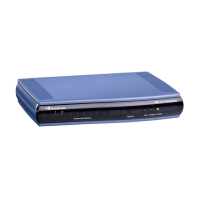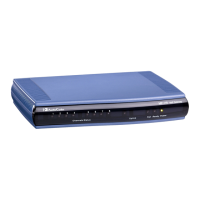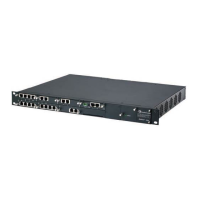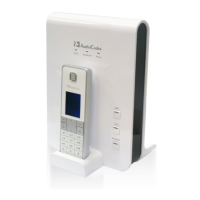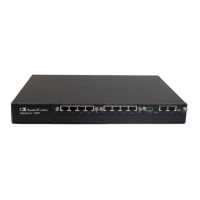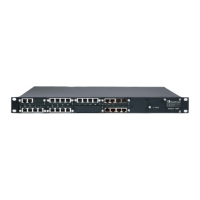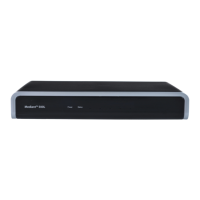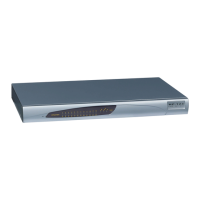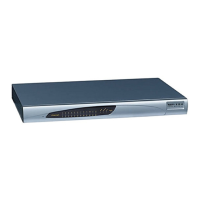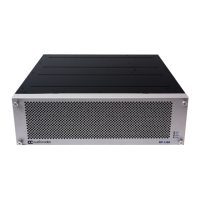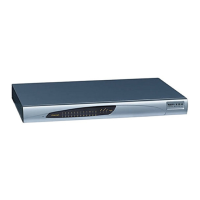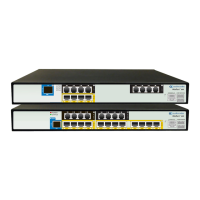CHAPTER16 Services
Mediant 1000 Gateway & E-SBC | User's Manual
● The Management LDAP Groups table is applicable only to LDAP-based login
authentication and authorization queries.
● If the LDAP response received by the device includes multiple groups of which the
user is a member and you have configured different access levels for some of
these groups, the device assigns the user the highest access level. For example, if
the user is a member of two groups where one has access level "Monitor" and the
other "Administrator", the device assigns the user the "Administrator" access level.
● When the access level is unknown, the device assigns the default access level to
the user, configured by the 'Default Access Level' parameter as used also for
RADIUS (see Configuring RADIUS-based User Authentication). This can occur in
the following scenarios:
✔ The user is not a member of any LDAP group.
✔ The group of which the user is a member is not configured on the device (as
described in this section).
✔ The device is not configured to query the LDAP server for a management
attribute (see Configuring LDAP Servers).
Group objects represent groups in the LDAP server of which the user is a member. The access
level represents the user account's permissions and rights in the device's management interface
(e.g., Web and CLI). The access level can either be Monitor, Administrator, or Security
Administrator. For an explanation on the privileges of each level, see Configuring Management
User Accounts.
When the username- password authentication with the LDAP server succeeds, the device
searches the LDAP server for all groups of which the user is a member. The LDAP query is based
on the following LDAP data structure:
■ Search base object (distinguished name or DN, e.g., "ou=ABC,dc=corp,dc=abc,dc=com"),
which defines the location in the directory from which the LDAP search begins. This is
configured in Configuring LDAP DNs (Base Paths) per LDAP Server.
■ Filter (e.g., "(&(objectClass=person)(sAMAccountName=johnd))"), which filters the search in
the subtree to include only the login username (and excludes others). For configuration, see
Configuring the LDAP Search Filter Attribute.
■ Attribute (e.g., "memberOf") to return from objects that match the filter criteria. This attribute is
configured by the 'Management Attribute' parameter in the LDAP Servers table.
The LDAP response includes all the groups of which the specific user is a member, for example:
CN=\# Support Dept,OU=R&D Groups,OU-
U=Groups,OU=APC,OU=Japan,OU=ABC,DC=corp,DC=abc,DC=com
CN=\#AllCellular,OU=Groups,OU=APC,OU=Japan,OU=ABC,DC=corp,DC=abc,DC=com
The device searches this LDAP response for the group names that you configured in the
Management LDAP Groups table in order to determine the user's access level. If the device finds a
group name, the user is assigned the corresponding access level and login is permitted; otherwise,
login is denied. Once the LDAP response has been received (success or failure), the LDAP session
terminates.
The following procedure describes how to configure an access level per management groups
through the Web interface. You can also configure it through ini file [MgmntLDAPGroups] or CLI
(configure system > ldap mgmt-ldap-groups).
➢ To configure management groups and corresponding access level:
1. Open the LDAP Servers table (Setup menu > IP Network tab > RADIUS & LDAP folder >
LDAP Servers).
- 221 -
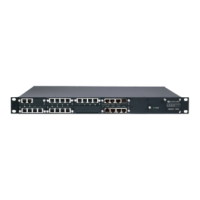
